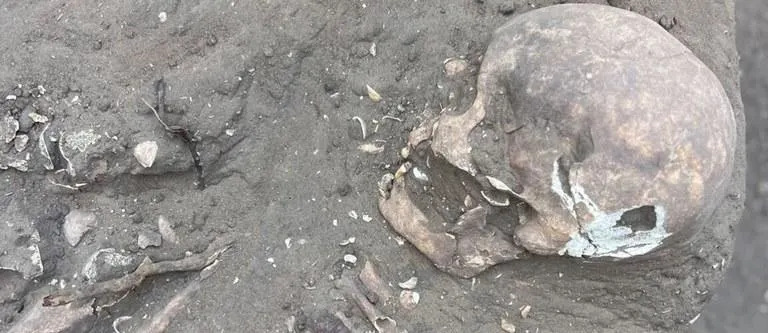Measles is surging again in UK because Covid destroyed trust in the medical establishment
Celia Walden
Mon, January 15, 2024

Sick child with red rash spots from measles
“You didn’t give your daughter the MMR, did you?” The tone of voice is the first giveaway. Mild incredulity, but not so mild that you would fail to notice it. They need you to notice it so that you can have The Conversation. So that you can be converted. Because like the evangelists standing at your door, brandishing a leaflet, this breed of anti-vaxxer wants to witness the epiphany.
I, however, cannot run fast enough from this particular conversation. I’ve had it enough times to know exactly how it’ll go. They’ll tell you the apocryphal tale of a friend of a friend’s nephew’s son, who was hitting every developmental milestone – until he had the MMR. Shortly after that the behavioural changes started. He was regressing, becoming less sociable in playgroup. He started to develop migraines, or eczema, or constipation – all comorbid conditions that go with autism.
There’s always a knowing nod and a pause before they then ask whether you’re familiar with Andrew Wakefield’s findings. That’s when you have to find a way to leave the room.
Scientific fact will get you nowhere. Neither will statistics. It doesn’t matter how many headlines are reporting measles outbreaks like the one hospitals in the West Midlands are currently flagging up, or how many leading immunologists are warning that unless more children are vaccinated, more hospital admissions and even deaths could be expected in the months and years to come, these parents remain resolutely stuck on Wakefield.
It doesn’t matter that the British anti-vaccine activist who published a case series in The Lancet in 1998 – which suggested that the measles, mumps, and rubella (MMR) vaccine may predispose children to behavioural regression and pervasive developmental disorder –
was struck off the UK medical register over a decade ago after being found guilty of misconduct by our General Medical Council.
It doesn’t matter that The Lancet subsequently retracted the paper or that Wakefield’s findings were deemed “fraudulent” after it was established that the case series had “no controls”, “linked three common conditions”, and that the children Wakefield had studied were carefully selected. And who cares that some of his pioneering research was funded by lawyers acting for parents who were already involved in lawsuits against vaccine manufacturers? Not the anti-MMR brigade. They know in their heart of hearts that this one-man cautionary tale in the legacy of hubris was right. Deaf to everything but their own beliefs, they will smugly trot out the biggest fallacy of all: “there’s no smoke without fire”.
Almost as tragic as the victims of their parents’ wilful ignorance are the desperate pleas from communicable disease specialists like Dr Naveed Syed, from the UK Health Security Agency (UKHSA), who said he was seeing “cases of measles rising every day in the West Midlands” and that there is now a fear of full community transmission.
On Friday, Birmingham Children’s Hospital confirmed that it had treated 50 children for measles in the past month – it would normally expect zero cases – and the NHS is now at pains to point out that an estimated one in five cases will result in a trip to hospital.
For that reason, our health service even ran a campaign last year, and I remember watching a Filipino friend shake her head in disbelief as we listened to a radio advert begging rather than urging parents to consider the seriousness of a disease that is almost 100 per cent preventable. “Back home, we would be biting their hand off for these free vaccines,” she explained. “What a spoilt society this is.”
The sad truth when it comes to the MMR and other vaccines is that health chiefs are battling two new, indomitable forces. The first is social media, which is obviously more reliable than every learned physician in the country combined and would have continued to erode vaccination numbers even without the pandemic. The second is, of course, Covid, which may have permanently damaged the public’s trust in vaccines.
I have more patience with those who offer up the latter as the main reason behind their vaccine hesitancy. The scale of misinformation out there (much of it, again, online) was unlike anything we have been forced to contend with before. Couple that with the facts we were being given – by scientists, no less – changing day by day, and you can see how deeply this would dent the public’s confidence in the powers that be.
Anyone presenting this as their defence, however, is conflating two things. With Covid, it was a moving situation, with scientists piecing together a jigsaw piece by piece – the sketchy first moments being at a significant remove from the final picture. But with the MMR, the facts have not changed. They are there in black and white: in the estimated 20 million cases and 4,500 deaths – mainly among children – the vaccine has prevented in the UK since 1968. They are in the words of Professor Sir Andrew Pollard, the chairman of the Joint Committee on Vaccination and Immunisation, who said in the simplest terms yesterday: “It would be a tragedy if any child were to die from measles when we have the tools in front of us to stop it.”









